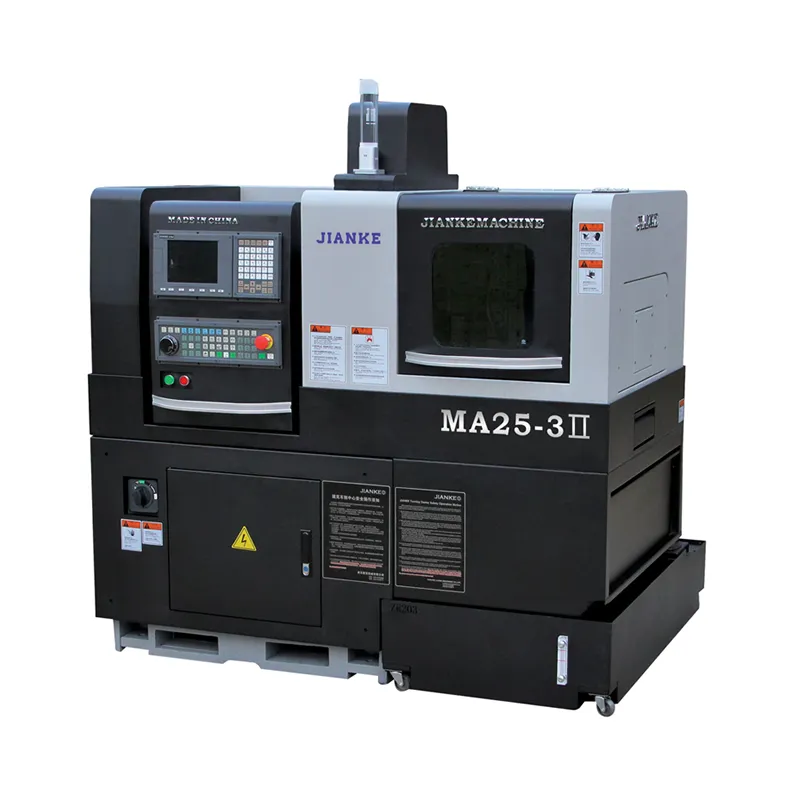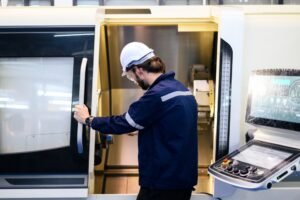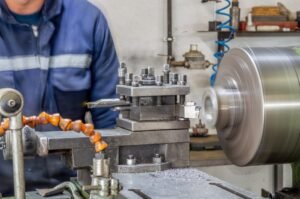Have you ever wondered why CNC machine play such a vital role in today’s manufacturing industry? Whether it’s automotive parts, aerospace components, or medical devices, CNC machines are indispensable. They not only boost production efficiency but also ensure high precision and consistency.
A CNC machine—short for Computer Numerical Control machine—uses programmed commands to control tool movement, enabling automated machining of complex parts. With the rise of Industry 4.0 and smart manufacturing, CNC machines have become more diverse and powerful, especially the 3-axis and 5-axis models, which are now the stars of the manufacturing world.
In this article, we’ll take you on a journey through the different application scenarios of 3-axis and 5-axis CNC machines, helping you make an informed decision based on your business needs. Whether you’re new to CNC machines or a factory owner looking to upgrade, you’ll find practical insights here.
CNC Machine Basics Type and Principles
Before diving into applications, let’s clarify the fundamental differences between 3-axis and 5-axis CNC machines.
- 3-Axis CNC Machine: The tool moves along the X, Y, and Z axes—ideal for 2D or 2.5D machining tasks.
- 5-Axis CNC Machine: In addition to X, Y, and Z, the tool or workpiece can rotate around two extra axes, enabling multi-angle and multi-face machining.
Simply put, a 3-axis machine is like a “cube” that moves up, down, left, right, forward, and backward. A 5-axis machine, by contrast, is a “polyhedron” that can rotate flexibly, making it perfect for machining more complex shapes.
These structural differences directly determine their capabilities and application ranges.
Typical Application Scenarios for 3-Axis CNC Machine
Thanks to their simple design, user-friendly operation, and lower costs, 3-axis CNC machines are widely used across many industries. They’re especially suited for processing regular shapes and relatively simple parts.
Key application areas include:
- Automotive Parts Manufacturing
3-axis machines are commonly used for engine parts, gearboxes, and other basic automotive components. They excel at efficient mass production and maintain consistent part dimensions. - Electronics Industry
The machining of electronic product housings, connectors, and PCB boards often relies on 3-axis machines, which meet the industry’s demands for both accuracy and speed. - Medical Devices
Basic surgical tools and implants can be efficiently machined with 3-axis machines, meeting the strict quality standards of the medical field. - Mold Making and Wood Carving
3-axis machines are also popular in mold manufacturing and wood carving, suitable for 2D patterns and shallow engraving.
Advantages of 3-axis machines:
- Simple structure, low maintenance cost
- Ideal for mass production, high efficiency
- Lower investment threshold
Tip: If your product designs are relatively simple and your precision requirements are reasonable, a 3-axis CNC machine is definitely the most cost-effective choice.
Typical Application Scenarios for 5-Axis CNC Machines
5-axis CNC machines are the “secret weapon” of high-end manufacturing. They can handle complex surfaces and multi-angle parts, making them perfect for high-precision, high-complexity tasks.
Typical application areas include:
- Aerospace
Turbine blades and aircraft structural components require 5-axis machining to achieve complex geometries and high precision. - High-End Automotive Parts & Custom Components
For high-performance automotive parts, 5-axis machines can complete multi-face machining in a single setup, greatly improving accuracy and efficiency. - High-Precision Medical Implants & Complex Surgical Instruments
Complex medical implants and surgical instruments demand extreme precision and intricate shapes—5-axis machines are the go-to solution. - Energy & Defense
Energy equipment and defense products often involve special materials and complex structures, both of which 5-axis machines can handle with ease.
Advantages of 5-axis machines:
- Capable of machining complex 3D surfaces and multi-angle parts
- Fewer setups required, resulting in higher accuracy
- Ideal for small-batch, diverse, and high-precision manufacturing
Just imagine: With a 5-axis machine, you can finish all-around machining of a complex part in a single setup—saving both time and effort. No wonder more and more high-end manufacturers are choosing them.
3-Axis vs. 5-Axis CNC Machine Application Comparison
To help you visualize the differences, here’s a quick comparison table:
| Aspect | 3-Axis CNC Machine | 5-Axis CNC Machine |
|---|---|---|
| Machining Freedom | 3 directions (X, Y, Z) | 5 directions (X, Y, Z + 2 rotary axes) |
| Complexity | Suitable for 2D and 2.5D structures | Complex 3D surfaces and multi-angle work |
| Industries | Basic automotive, electronics, molds | Aerospace, high-end automotive, medical, defense |
| Precision | Medium | High |
| Cost | Lower equipment and maintenance | Higher equipment and maintenance |
| Efficiency | High for mass production | Best for small-batch, high-precision |
How to choose:
- If you mainly produce simple, high-volume parts, a 3-axis machine is practical and economical.
- If your products are complex, require high precision, and are produced in smaller batches, a 5-axis machine is the better fit.
Selecting the right CNC machine isn’t just an equipment investment—it’s a key step in strengthening your manufacturing competitiveness. 3-axis machines are efficient and economical for mass production, while 5-axis machines offer outstanding capabilities for high-end manufacturing.
If you’re looking for the best CNC machine for your factory, we’re here to help. We offer a wide range of high-performance CNC machines and customized solutions to support your business’s transition to smart, high-quality manufacturing.
Don’t hesitate—contact us today! Let us help you find the perfect CNC machine and open a new chapter in efficient, precision machining.
FAQ
A 3-axis machine moves the tool along three linear axes. A 5-axis machine adds two rotational axes, allowing for much more complex machining.
Aerospace, high-end automotive, medical devices, and defense sectors—where parts are complex and require high precision—typically choose 5-axis machines.
3-axis machines are suitable for medium-precision tasks and simple parts. For complex surfaces and multi-angle machining, they’re not ideal.
For simple designs and large batches, choose 3-axis. For complex, multi-angle parts, go with 5-axis.





